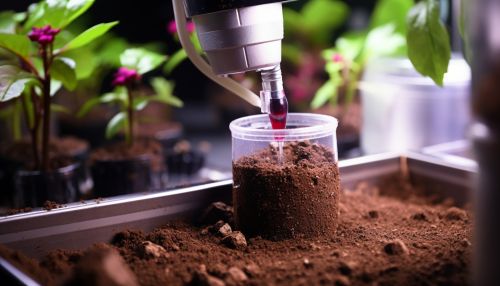Biostimulation
Introduction
Biostimulation is a process that aims to stimulate the natural processes of bioremediation in certain environments by providing nutrients and other substances that stimulate the growth and activity of naturally occurring microbial populations within the environment. This process is often used in the field of environmental science, particularly in the remediation of contaminated soils and water bodies.
Overview
Biostimulation is a form of bioremediation that involves the addition of nutrients and other substances to the environment to stimulate the growth of indigenous microorganisms. These microorganisms then degrade organic contaminants, such as petroleum hydrocarbons, into less harmful substances. Biostimulation is often used in conjunction with other forms of bioremediation, such as bioaugmentation, which involves the addition of specific strains of microorganisms to the environment to enhance the degradation of contaminants.


Mechanism of Action
The primary mechanism of action in biostimulation is the stimulation of indigenous microbial populations through the addition of nutrients and other substances. These substances can include nitrogen, phosphorus, and potassium, which are essential for microbial growth and activity. The addition of these substances can significantly increase the rate of biodegradation of contaminants in the environment.
In addition to nutrients, other substances such as electron acceptors (e.g., oxygen, nitrate, sulfate) and electron donors (e.g., organic carbon) may also be added to the environment to stimulate microbial activity. The choice of substances to add depends on the nature of the contaminants and the specific microbial populations present in the environment.
Applications
Biostimulation has been used in a variety of applications, including the remediation of contaminated soils, groundwater, and surface waters. It has been particularly effective in the remediation of sites contaminated with petroleum hydrocarbons, such as oil spills.
In the field of agriculture, biostimulation has been used to enhance the productivity of soils by stimulating the activity of beneficial microorganisms. This can lead to improved nutrient cycling and increased plant growth.
Advantages and Disadvantages
One of the main advantages of biostimulation is that it utilizes the natural abilities of indigenous microorganisms to degrade contaminants. This makes it a potentially cost-effective and environmentally friendly approach to remediation.
However, biostimulation also has some disadvantages. For example, the effectiveness of biostimulation can be influenced by a variety of factors, including the nature and concentration of the contaminants, the characteristics of the environment, and the specific microbial populations present. In some cases, the addition of nutrients and other substances can lead to undesirable side effects, such as the proliferation of harmful microorganisms or the leaching of nutrients into groundwater.
Future Directions
Research into biostimulation is ongoing, with a focus on improving the effectiveness and predictability of the process. This includes the development of new methods for the delivery of nutrients and other substances, as well as the identification of specific microbial populations that are particularly effective at degrading certain types of contaminants.
